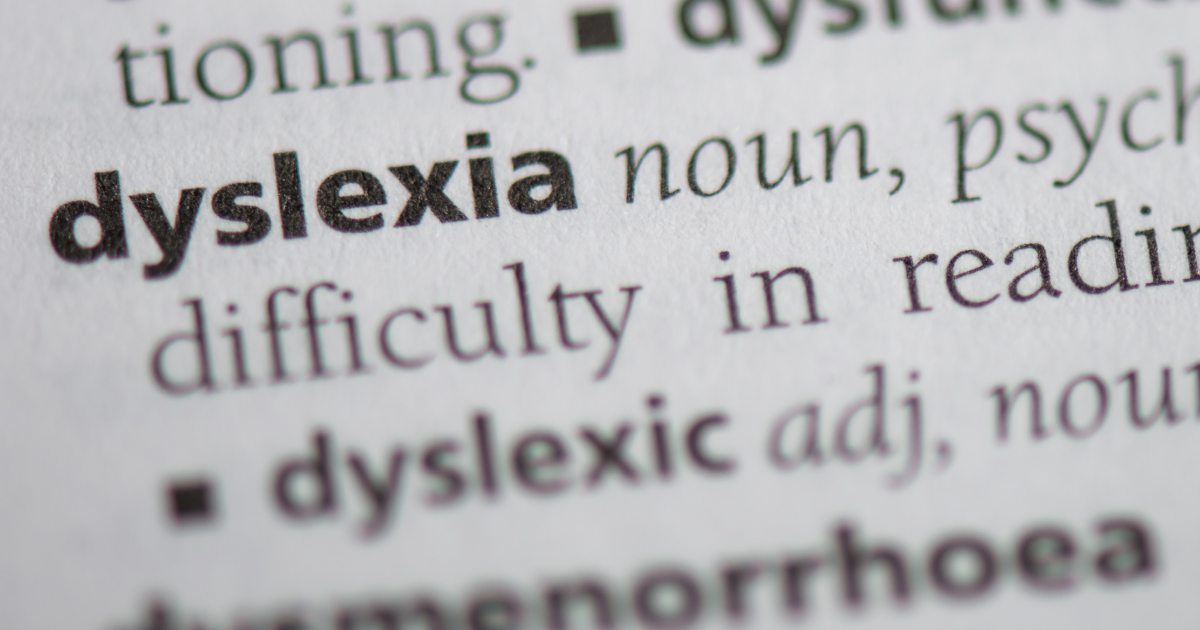Dyslexia for Beginners
POSTED ON: October 13, 2021

Dyslexia has become a buzzword in the past few years as grassroots movements are finally driving systemic change. States like Arizona, for example, have created legislation mandating that every child in kindergarten and first grade be screened for dyslexia. While the word dyslexia is being said with increased frequency, its definition can be quite elusive.
What is Dyslexia?
The International Dyslexia Association has a great definition you can access here but I want to offer what I feel is the most important part of its definition:
- Dyslexia is a specific learning disability—one that impacts a child’s ability to learn—more specifically, their ability to learn to read. And while dyslexia’s definition uses the term specific learning disability, not all dyslexic children qualify for special education services under that label. I’ll explain more about that later.
- Dyslexia is neurobiological in origin—meaning it impacts parts of the brain. It is not caused by poor parenting or a brain injury; it does, however, have a genetic component.
- Dyslexia is characterized by difficulties with accurate and/or fluent word recognition and by poor spelling and decoding abilities. There is a difference between accurately reading a story and fluently reading a story. A child who reads a story with 100% accuracy may be spending unusual amounts of time and energy making sure the word is read correctly. Many individuals with dyslexia are characterized as having great work ethic because of the years spent working extra hard to learn concepts that come easily to their peers.
- Dyslexia typically results from a deficit in the phonological component of language. This is crucial for early identification of dyslexia. Poor phonological awareness skills in young children tend to cause difficulty reading. Put another way, children who have trouble appreciating the sounds within a word will likely have difficulty reading the letters in a word.
- Dyslexia is unexpected in relation to other cognitive abilities and the provision of effective classroom instruction. For example, an individual with dyslexia has average or above average IQ. If an individual has below average IQ, dyslexia would not fit as a possible diagnosis because reading difficulties would be expected in such an individual. Furthermore, a child who has not had access to an education may not qualify for a dyslexia diagnosis until they receive substantial instruction in phonemic awareness. If the reading difficulties persist after such instruction, a dyslexia diagnosis may be given.
How many people are impacted by dyslexia?
The research varies, but the prevalence of dyslexia ranges from 8-20% of the population. That’s a lot of people! Some—especially adults—go undiagnosed.
Phonemic awareness, phonological awareness, phonics: what do they all mean?
Let’s start off with defining phon, which is a Greek word meaning “sound.”
Phoneme is the basic unit of sound. An example is the sound associated with the letter t. If you close your eyes and say the sound, you are saying the phoneme.
Phonological Awareness is a global awareness of chunks of speech. For example, a child who can rhyme words has an appreciation for the sounds within words. They understand that changing the first sound in cat can turn the word into hat or bat. Phonological awareness also includes dividing a sentence into words, or words into syllables, or even dividing a word into individual sounds (called phonemic awareness).
Phonemic Awareness is the term we give for an appreciation of individual sounds within words. Phonemic awareness is a component of phonological awareness, but it carries great importance since a child’s ability to recognize individual sounds within a word will lead to associating a letter with that sound (also known as reading).
Phonemic Representation is an awareness of multisensory features that differentiate one phoneme from another. In other words, it’s the awareness that the “th” sound happens as a result of putting our tongue between our teeth, and the /f/ phoneme happens as we put our top teeth on our bottom lip. Phonemic representations are important because poor phonemic representations result in a core deficit of poor phonological awareness, which leads to dyslexia. Think about it: If your brain has difficulty grasping the small differences between sounds–“f” and “th” are closely related as sounds—it will likely have difficulty manipulating sounds within words.
Phonological Processing is the ability to quickly and correctly hear, store, recall, and make different speech sounds. For example, if I were to have you repeat the word impignorate, meaning to pledge or mortgage, your brain would have to quickly and correctly hear each of the 10 sounds in the word, store those sounds in the correct order, and then repeat them back in the correct order all within a matter of seconds. Individuals with dyslexia have difficulty with phonological processing, as it presents barriers for learning to read and write, follow directions, and communicate efficiently.
Finally, we have phonics, which is the relationship between letters and sounds. A phoneme you can hear and repeat back with your eyes closed. With phonics, you need to have your eyes open to be able to see the letter and use your knowledge of letter-sound correspondences to make sense of the letters together. Hint, you are using your phonics skills now as you read this!
To sum up…
Poor phonemic representations can help explain why dyslexic children tend to misspell words like bat as bet; there are many similarities between “a” and “e.”
Poor phonological processing can help explain why children may read a word like take as kate: their brain may be unable to store and then recall the sounds within take in the right order.
The journey to understanding dyslexia is similar to the journey from assessment to intervention: take it one step at a time and embrace the learning process along the way.
Red Square Pegs was established to empower dyslexics by embracing dyslexia through awareness and shared experiences and to be a symbol of acceptance, pride, and confidence.

